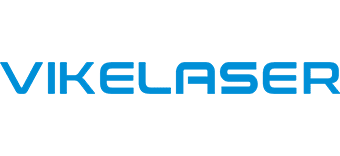Metal Laser Marking and Engraving
Metal is complex. It’s conductive, reactive, and made up of chemicals and alloys. The list of metals is extensive. There are rare-earth metals, transition metals, alkali metals and lanthanide metals, to name just a few. We depend heavily on metals in manufacturing, production and consumerism and that is why it is vitally important to have the ability to mark metal permanently when required.
Why mark metal? Tracking numbers, unit numbers, logos, graphics, directions – there are so many reasons to mark metal; for example, engraving keys, adding a product number to a valve, coding an iPad, branding a tool or putting a size on a pipe.
Vikelaser has been in the metal marking industry for well over a decade, and uses technical training, industry knowledge and hands on experience to help you find the best metal engraving machine for your needs. There are many different types of metals, and we have a metal marking machine solution for each one. Our products are highly sought after in many different industries, as is our outstanding customer service and after-purchase customer care. We want to be a partner in your success by helping you discover the metal engraving machine you need. With vikelaser, you can rest easy knowing our prices are affordable, our service is excellent and our products exceed expectations.
Vikelaser offers various marking solutions adapted to the varied needs of today’s industries. Depending on the requirement profile, different metals and different laser marking methods are available.
Different Marking Methods
Laser Annealing
Laser annealing is used with all metals which show a color change when exposed to heat and oxygen. The laser marker selectively heats up small spots of the workpiece surface until annealing colors appear. Annealing leaves the material surface unharmed but still produces high-contrast, clearly legible markings.
Black Marking
Blackmarking is a solution for direct marking of stainless steel alloys. The ultrashort-pulse laser technology doesn’t introduce any significant heat and produces a high quality, high contrast mark regardless of the viewing angle. The process is particularly suitable for the implementation of the Unique Device Identification (UDI) in the medical industry, as well as for blackening of anodized aluminium surfaces and interesting for EMS-providers.
Laser Engraving
Usually the laser marker engraves the material surface down to some 10 µm in depth. Engraved marks are exceptionally durable and can only be removed by heavy grinding. Therefore laser engraving is used for forgery-proof product marking.
Surface Removal
Selective ablation of lacquer coats or anodizing layers shows a different-colored material underneath and produces colored markings.
Advantages of metal laser marking
- Durable, high-contrast markings
- Intact surfaces (annealing), important e.g. for medical devices
- Fast compared to mechanical marking techniques
- Very small line widths realizable
- Flexible, individualized marking content
